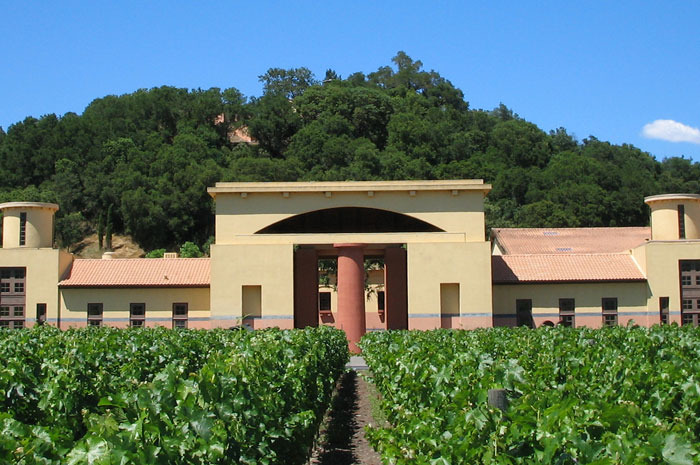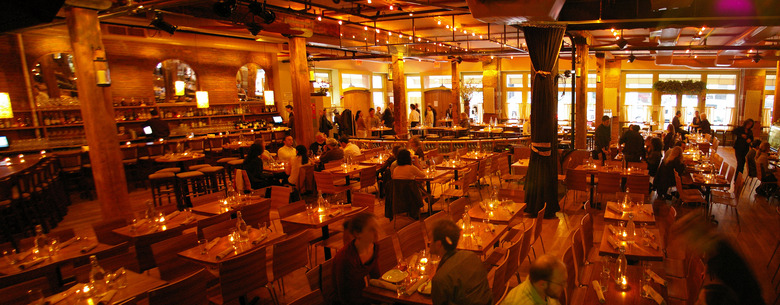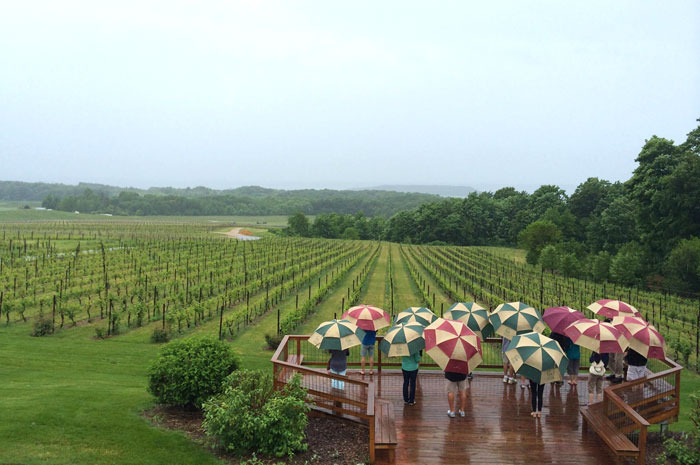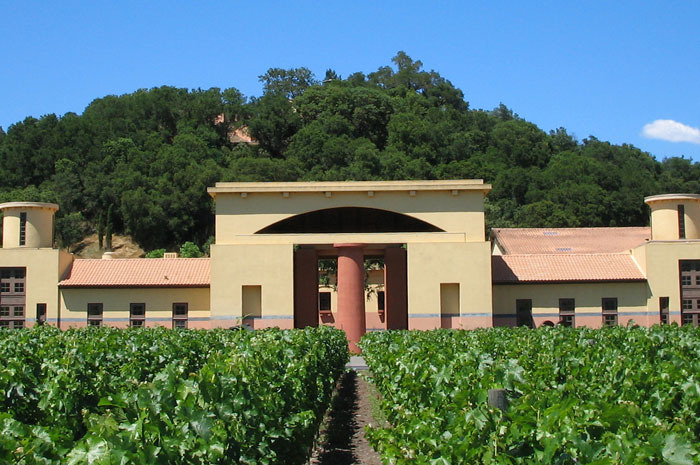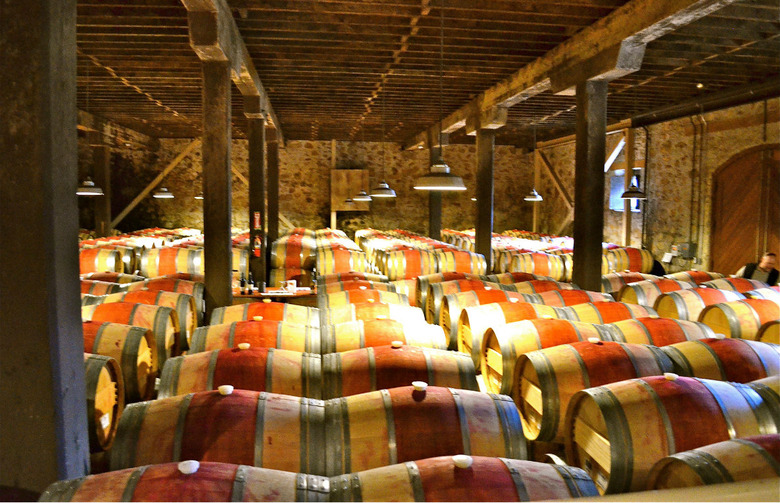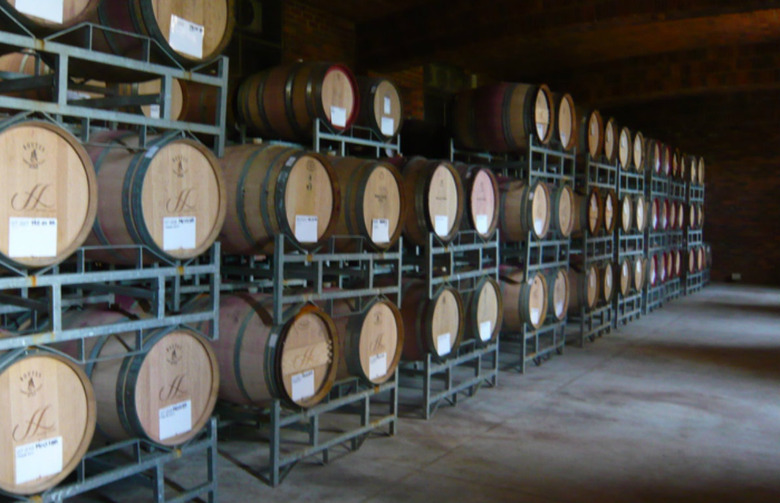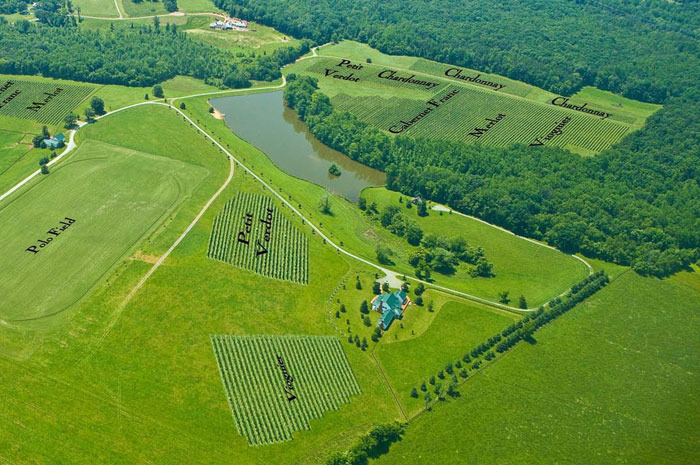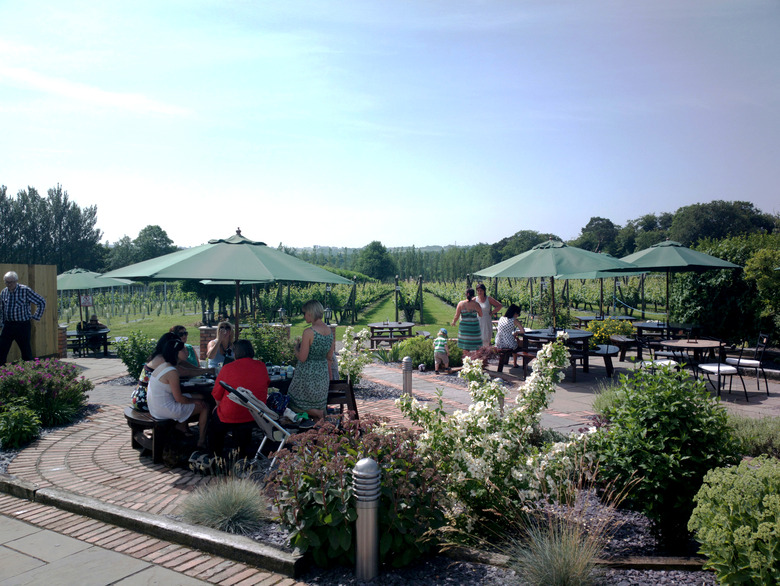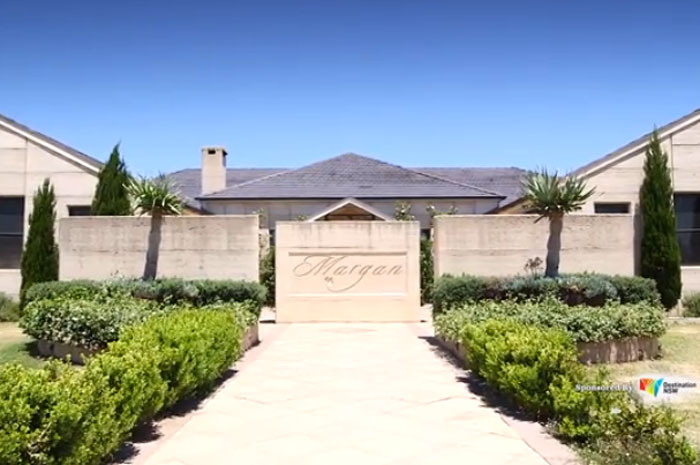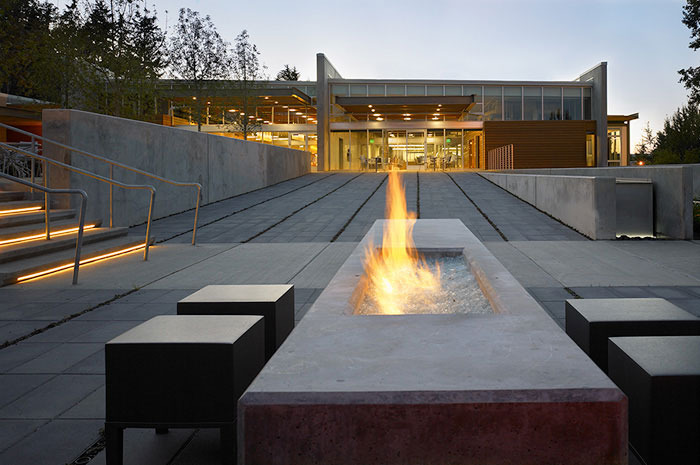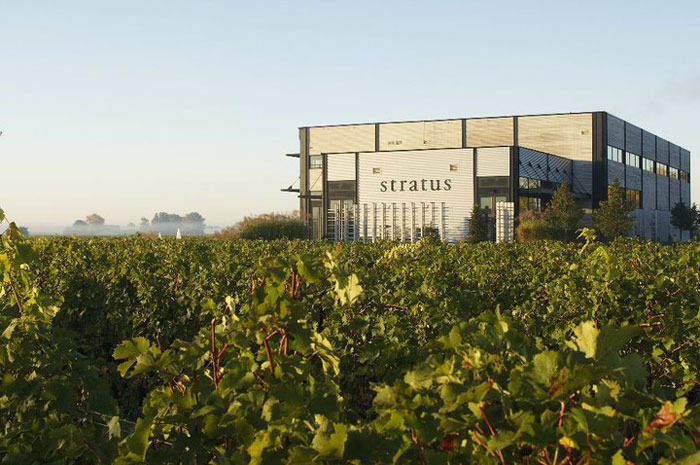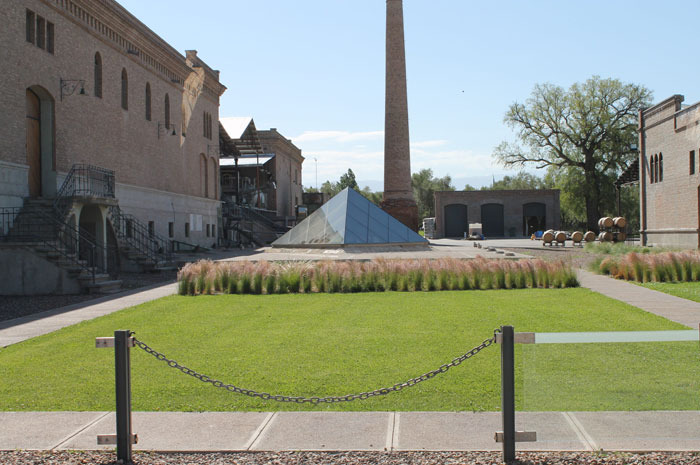12 Wineries Worth Visiting Slideshow
The mission of a winery is to make wine. If the amount of wine being made is minimal, the space in which it is produced can be as well. There are "wineries" in garages, barns, industrial parks, even tractor-trailers.
City Winery, New York City
Views of rolling vineyards and state-of-the-art hospitality centers aren't the only things that can make a winery worth visiting. Lower Manhattan's City Winery (there are also branches in Chicago, Napa, and Nashville) is a real working winery, despite its urban location. It's tiny by California standards, but proprietor Michael Dorf has managed to pack a lot into the space, barrel-aging room included. What makes this winery especially cool can be traced back to Dorf's roots in the music scene, as the founder of the (in)famous music venue, The Knitting Factory: while wine ages downstairs, the upstairs stage plays host to the likes of Los Lobos, Allen Toussaint, Stephen Stills, Junior Brown, and Madeleine Peyroux. Special bottlings are created to honor the performers, and City Winery's creative approach to winemaking permits members of the community to learn about and experience the process, even crushing grapes and making their own vintages.
Chateau Grand Traverse, Traverse City, Mich.
Michigan isn't the first state that comes to mind when folks talk about American producing regions, but vintners have been bottling wine commercially here since just after the repeal of Prohibition. Chateau Grand Traverse, on Michigan's scenic Old Mission Peninsula, launched in 1974, is one of the largest wineries in the state, turning out everything from first-class chardonnay, pinot grigio, and pinot noir to a super-sweet ice wine served at the 1989 inauguration of President George H.W. Bush to several bottlings based on the cherries for which this part of Michigan is famous. Wine aside, the property is home to a warmly contemporary country inn with six adults-only guest rooms, a first-rate tasting room, and a network of vineyard walking trails that are particularly beautiful in the fall.
Clos Pegase, Calistoga, Calif.
Onetime publishing mogul Jan Shrem launched this showplace Napa Valley winery, designed by blue-chip architect Michael Graves, in the early 1980s, stocking it not just with state-of-the-art winemaking equipment but also with an eclectic collection of paintings, sculpture, and glassware, eventually valued at $135 million. For years, a self-guided tour of the art was one of the big draws here. In 2013, however, Shrem sold Clos Pegase to the owners of Girard Winery and Dean and DeLuca, and donated his art collection to the University of California, Davis. The winery is still a stunning place to visit, however — a sort of mythological-Mediterranean-looking redoubt in a gorgeous vineyard landscape. Picnic on the grounds or patio and take the Connoisseur Cave Tour, complete with a seated tasting of current and library wines, and get a real feeling for the Napa Valley lifestyle.
The Hess Collection, Napa, Calif.
While Jan Shrem's art collection has left the Napa Valley, Swiss entrepreneur Donald Hess reinforces the connection between wine and art with his own remarkable array of contemporary art. The Hess Collection property includes a real museum, with museum-quality lighting and a roster of artists that includes such heavyweights as Robert Motherwell, Francis Bacon, Anselm Kiefer, Frank Stella, and Chuck Close. In the midst of all this creative expression, the visitor might forget for a moment that this is also a winery — but a sample of Hess's ripe, tropical Mount Veeder chardonnay or dense and spicy Evangelho Vineyard Artezin Mourvèdre will quickly correct that misapprehension. Unfortunately, the winery and museum, part of which is housed in a 1903-vintage stone structure, was damaged in last fall's Napa earthquake. Wine tastings are still offered in various locations around the stunning mountaintop property, but the tasting room and art collection won't be fully available to visitors until July or August.
Hidden Valley Wines, Stellenbosch, South Africa
There are plenty of attractions to draw visitors to this comparatively small South African wine estate, including a handsome contemporary-style tasting room, a series of secluded picnic areas near a dam, and a nature trail leading through a little paradise of native flora and fauna. But the real draw here is culinary: At the winery's Overture restaurant, chef-proprietors Bertus Basson and Craig Cormack serve some of the region's best and most imaginative food, from impala tartare with macadamia purée to roast sole with parsley cream to apple tart with caramel ice cream. Add tastings of olives and olive oils grown on the property or a chocolate-and-wine pairing combining Hidden Valley's delicious bottlings with artisanal chocolates, and you've got an attraction no food lover should miss.
King Family Vineyards, Crozet, Va.
Surveying the scenery in this idyllic spot in the foothills of the picturesque Blue Ridge Mountains, you'll understand why King Family Vineyards is one of the most popular wedding venues in Virginia. It is also a hard-working winery, with a vineyard planted with merlot, viognier, cabernet franc, chardonnay, and petit verdot vines, recently joined by malbec and petit manseng. The rest of the land absorbs throngs of event-goers, tasting room attendees, and, from Memorial Day to mid-October, spectators who flock here to enjoy free polo matches.
Llanerch Vineyard, Hensol, The Vale of Glamorgan, Wales
The big surprise at this handsome vineyard facility a few miles northwest of Cardiff (and about a three-hour drive from London) isn't its pastoral setting surrounded by vineyards, dense woods, and rolling grassy hills — this is Wales, after all, where such landscapes are commonplace. It isn't even the cookery school run by noted Welsh chef and cooking teacher Angela Gray, the farm-to-table restaurant and bistro (where the roast Welsh lamb rump is a must), or the simply furnished but comfortable country-inn-style hotel rooms. The big surprise is that the white, rosé, and sparkling wines produced from the grapes grown here — the actual winemaking takes place at another facility — under the Cariad label are actually very good, and perfect for illuminating your visit to this unusual vineyard destination.
Margan Hunter Valley Wines, Broke, New South Wales, Australia
Andrew and Lisa Margan designed their own striking contemporary-style winery complex, where they make a wide range of excellent wines (including a chardonnay–pinot noir sparkling wine and a fruit-filled interpretation of the popular Portuguese variety verdelho) in the heart of Australia's oldest wine region. The attraction here, though, is more than wine: There's a one-acre market garden on the site, and the Margans raise their own chickens and lamb — and at the winery restaurant, everything but the fish is either from their own property or that of their neighbors. The result is some of the best, freshest eating in this whole delightful region, whose geography will remind wine-lovers of a cross between Napa and Sonoma.
Novelty Hill–Januik Winery, Woodinville, Wash.
The winemaking process is as much intellectual as it is sensory, and the Novelty Hill-Januik Winery takes pains to reflect that duality. The cerebral design takes into account the rhythm and geometry of the agricultural landscape, along with the craft, technology, and patterns of wine production (the enterprise makes a wide range of vintages under both the Novelty Hill and Januik labels). Still, the sensual pleasures are well addressed by the cozy outdoor fire pit, the well-landscaped terraces that encircle a bocce court, and the incorporation of the surrounding wetlands into the public spaces.
Sterling Vineyards, Calistoga, Calif.
The Sterling Vineyards winery is one of the most striking in a region full of striking wine estates. Founded in 1964 by Englishman Peter Newton (though now owned by the giant Diageo wine and spirits group), the winery occupies buildings that are supposed to evoke the whitewashed architecture of the Greek island of Mykonos, though the bells in the bell tower come from a church in London that was bombed during World War II. The hilltop location, which visitors reach by gondola from the valley floor, provides a panoramic view of vines and wineries for miles. The tour and tasting (including a look at the winery art collection, one feature of which is an Ansel Adams photo essay called "The Story of a Winery" — shot not here but at the Paul Masson Winery in Saratoga), are considered among the best in Napa.
Stratus Wines, Niagara Peninsula, Ontario, Canada
As one of North America's most heralded emerging wine regions, Niagara has a lot more going for it than the famous falls. When it opened in 2005, the Stratus Wines facility was the first of its kind, earning a silver LEED certification. Perhaps inspired by the proximity to the incredible natural wonder of the falls, the remarkable design utilizes the natural resources not just to be more sustainable — see the geo-exchange technology, the elevator tanks, and the customizable sorting tables — but also to enhance the aesthetics, as in the "glass cube" tasting room. Get together a group of at least six for a guided tour and tasting.
Trapiche, Mendoza, Argentina
The Argentinean wine capital of Mendoza boasts more than one innovatively designed winery, but what sets Trapiche apart is the way it celebrates the history of the wine region in a modern context. The company took over an abandoned winery built in 1912 and completely overhauled the buildings while keeping intact cherished vintage elements like the original signs on concrete tanks and the end-of-the-line railroad tracks. Even the remnants of the original brick walls were integrated into the modern glass and steel visitors' center. In the spirit of bringing the past into the future, Trapiche is also testing a biodynamic vineyard on site, with a picturesque pond, gardens, and animals including a llama, making it a delightful place to spend an afternoon.
